Breanna has been in charge of Marion County SC Animal Shelter for only a month, but it’s clear she’s found her calling. She’s been involved with the shelter for four years, working her way from volunteer to part-time kennel tech to full-time kennel tech to assistant director to director.
Originally from Syracuse, New York, Bree moved to South Carolina with her infant daughter four years ago to help her mom who was going through cancer treatment. At first, she was a stay-at-home mom, but needing something else to do, she began volunteering at the shelter. Bree has worked as a waitress and went to school for Phlebotomy, but her heart is here with the animals, so she jumped at the opportunity to work at the shelter.
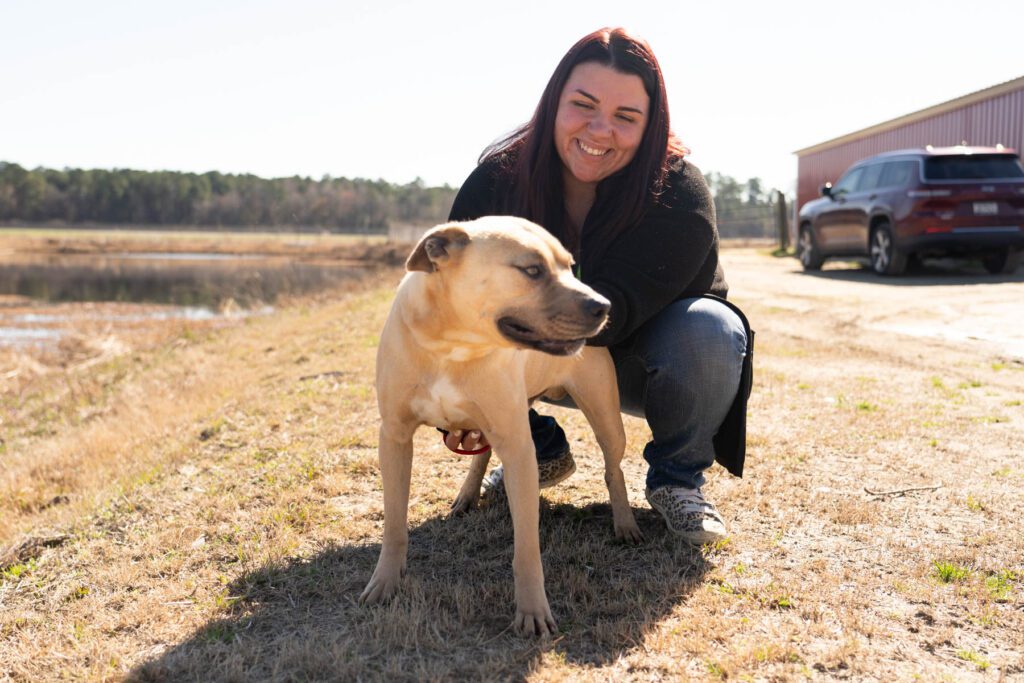
At twenty-four, she brings a fresh energy and an easy-going attitude to the job. Her focus is on keeping the dogs happy and healthy – physically and mentally. All of the dogs get out for daily play groups which reduces stress on the dogs and allows the staff and volunteers to get to know the dogs.
The kennels are all technically outside, but have roofs and partial metal sides or tarps around the sides. Each kennel is roomy, with a full feeder hanging from the fence and a dog house secured on a wooden balcony (the property is prone to flooding).






As we walked through taking pictures and giving out treats, the most amazing thing happened…it got quiet. I’m pretty sure that’s a first even after 125 shelter visits. That’s a testament to the power of playgroups.
Almost every dog came to the front of its kennel to greet me and some even sat for the treats I offered. Their soft mouths made it clear that treats were not an uncommon occurrence. Bree explained that they work with the dogs while they are here, which can be a long time with an average length of stay being eight to nine months. Volunteers teach them to sit and walk nicely on a leash. “I don’t just want to stick them in a kennel and walk away. I want to make the most of their time here.”



This is pretty impressive considering the shelter houses nearly two hundred animals (forty in foster care) and has only two full-time and one part-time staff (plus 2-3 ‘trustees’ from the prison camp next door who handle the cleaning and some of the care).
When we arrived, we met Chavis, the county administrator who began work in March 2023 and has placed her focus on improving the animal shelter. The first thing she did was raze the old wooden building which was rat, mold, and parvo invested. A new metal shelter building is partially finished. The cement block kennels have been built, but they do not yet have doors for the kennels, electricity, HVAC, or water. The small(ish) building couldn’t possibly hold the number of dogs they house, so the plan is to house the more vulnerable dogs inside, and have a whelping pen and a safe space to house puppies.



Speaking of water, the shelter has no hot water, and the water they have (available only through several hoses and one sink) is not drinkable. Every summer, many of the dogs contract giardia.
Chavis pointed to a property just across the narrow pond beside the shelter where she envisions the new shelter being built. She hopes it will be the nicest shelter in the Pee Dee area (I’m still not clear on how this part of South Carolina came to be Pee Dee). She got involved in the shelter project because as she was starting her new position that’s what the residents were complaining about and that’s where the ‘chatter’ was. That chatter speaks to a community who want better for their animals, and the power of residents to bring change.
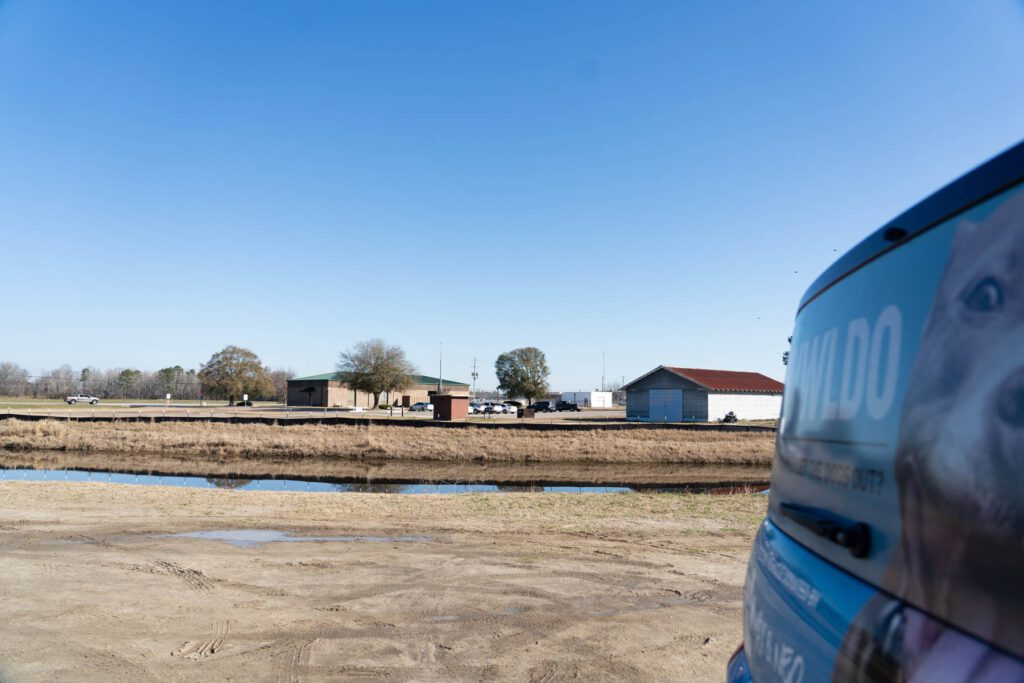
In her years on staff, Bre has worked hard to develop rescue contacts. Two of those rescues – Lucky Pup Rescue SC and Operation Paws for Homes – pull from the shelter regularly. Many of the adoptions they have are from out of the area. The animals are all listed on Petfinder, and many on the shelter’s Facebook page.
Bree pulled out a few dogs who needed updated bio pictures and each one was sweeter than the last. Clearly, these dogs are as relaxed and happy as they can be living in a shelter situation. I’m certain that daily playgroups are a big reason (plus volunteers and staff who give them daily attention). Walking through the kennels was a treat – I met so many beautiful, big dogs and never once thought anyone would be tempted to take my finger. They much preferred to pass kisses through the fence. The dogs are separated only by chainlink, yet we never saw a single scuffle, even when I was handing out treats to dogs side by side.





With a population that is over 80% Heartworm positive, the shelter tests on intake and again in six months, just in case any would pop positive later. They give monthly preventatives, vaccinate on intake, deworm, treat for flea and tick, and work to get every animal spayed or neutered. With their huge number of dogs, that means a daily vet run (20-25 minutes each way) to one of two area vets.
MCAS has a budget of only $800 a month for food and pay $6K a month for vet work, so fundraising is an ongoing project. They also have a nonprofit group, Support our Shelter, that helps. Bree would like to work on grants to finish the building. Clean, safe water for the dogs (and people) is another of her hopes.
The shelter practices managed intake and has a waiting list of forty dogs and eighty cats at the moment. When someone comes with a stray, Bree tries to backsource the situation by providing food, veterinary care, etc. and asking that good Samaritan to foster the dog until there is a space. She’s had some success with this approach.
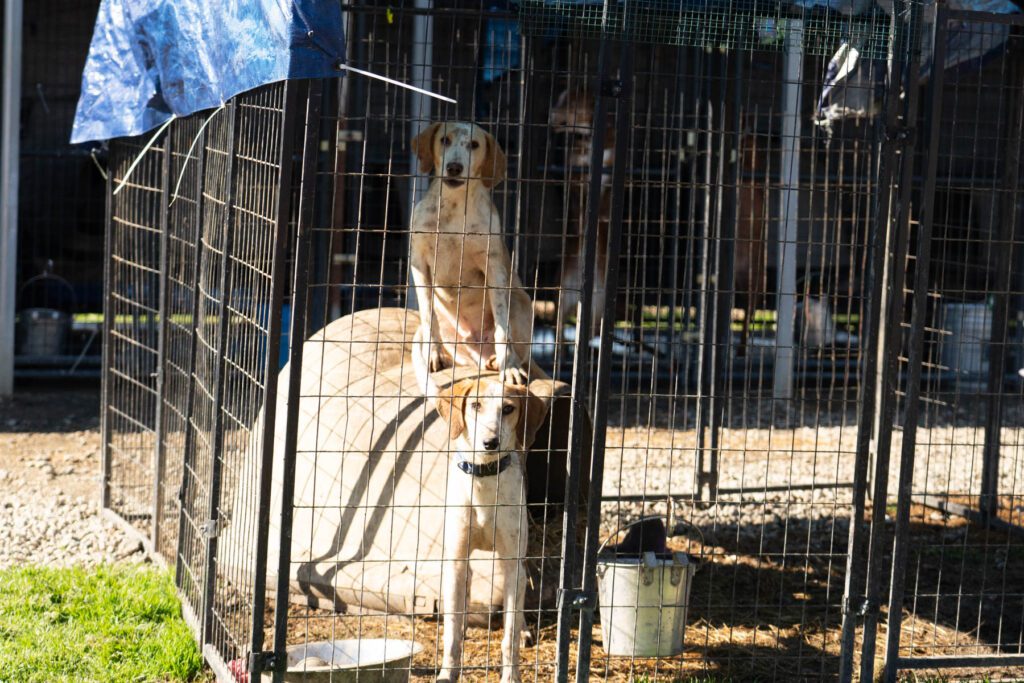
Even with big numbers and enormous needs, the shelter does not euthanize for space. When they have to make a decision to euthanize due to behavioral concerns, they take a team approach with staff, trustees, and a volunteer trainer working together to make the decision.
When I asked Bree how she liked her job, she lit up. “I love what I do. Sometimes on my day off, I drop my daughter off at school, and want to come back over here and run a few play groups or walk some dogs. I love being here.” She told me about the cats and dogs who just left on a transport and said seeing them go to find their homes was the highest of highs.
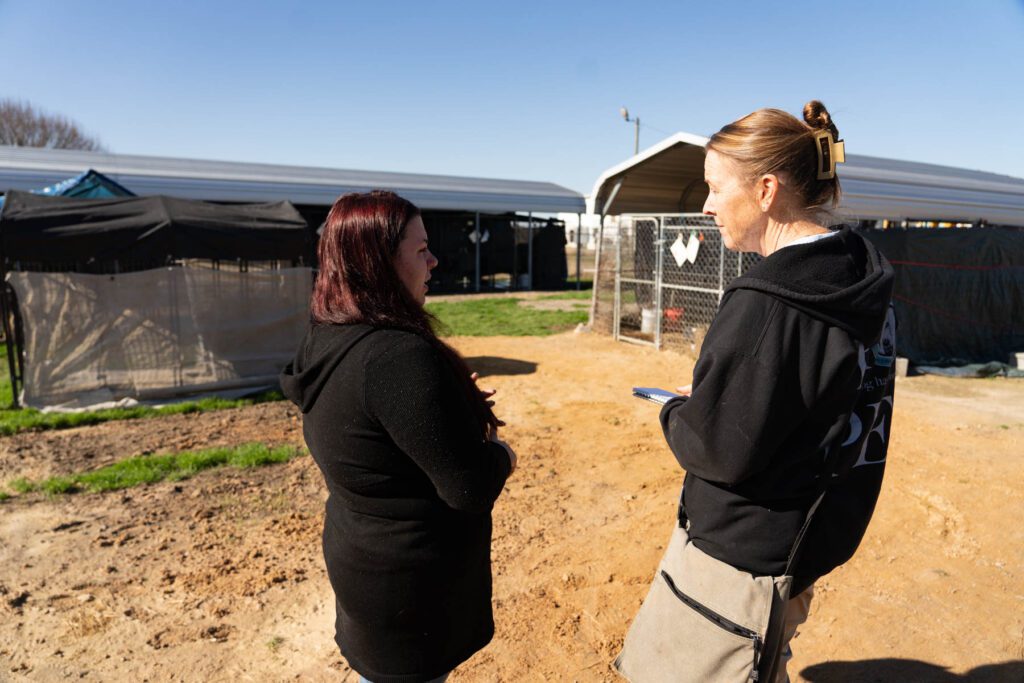
I imagine it gets even muddier than it was the day of our visit and can’t begin to imagine what it’s like in the thick of summer. Marion County Animal Shelter may have been one of the roughest facilities we’ve seen, but the dogs were healthy and happy and probably some of the least stressed we met. That’s a reflection of Bree’s leadership, the committed volunteers who love these dogs, and the county leadership who recognize the need to make improvements at the shelter.
Even without the new building, I’d wager that Marion County Animal Shelter is already the nicest shelter in the Pee Dee area, if you’re a dog (or cat—I didn’t mention the cat digs – but they have a free-roaming building all to themselves).



If you’d like to help the Marion County Shelter, you can shop their wishlists:
Amazon: https://www.amazon.com/hz/wishlist/ls/3S3PXUJ69HP1U
Chewy: https://www.chewy.com/…/support-our-shelter-marion-sc…
Walmart: https://www.walmart.com/…/b26a65cf-5f2d-4177-8395…
Or donate to the Support our Shelter 501(c)(3) group: https://sosmarionsc.com/
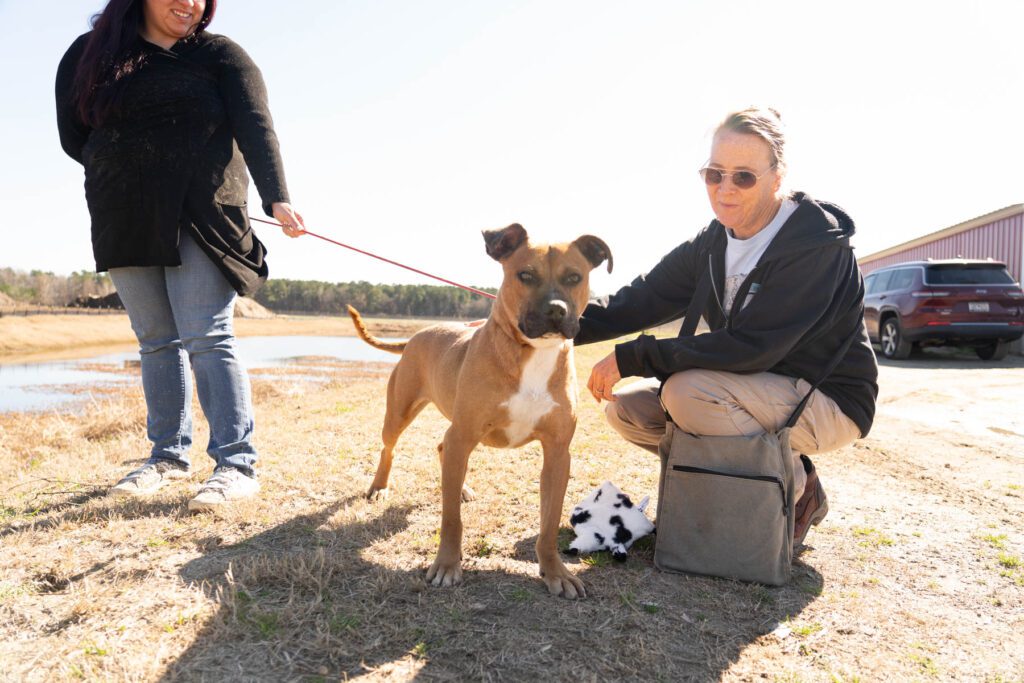
Until each one has a home,
Cara
If you want to learn more, be sure to subscribe to this blog. And help us spread the word by sharing this post with others. Visit our website to learn more.
You can also help raise awareness by following/commenting/sharing us on Facebook, Instagram, YouTube, Tik Tok, and the Who Will Let the Dogs Out podcast.
To see our Emmy-nominated, award-winning short documentary, Amber’s Halfway Home, click here. If you’d like to see it on the big screen (along with other short dog films), check out the tour schedule of The Dog Film Festival, currently in art movie houses all over the country.

Learn more about what is happening in our southern shelters and rescues in the book, One Hundred Dogs & Counting: One Woman, Ten Thousand Miles, and a Journey Into the Heart of Shelters and Rescues (Pegasus Books, 2020). It’s the story of a challenging foster dog who inspired me to travel south to find out where all the dogs were coming from. It tells the story of how Who Will Let the Dogs Out began. Find it anywhere books are sold. A portion of the proceeds of every book sold go to help unwanted animals in the south.
For more information on any of our projects, to talk about rescue in your neck of the woods, or become a WWLDO volunteer, please email whowillletthedogsout@gmail.com or carasueachterberg@gmail.com.



Leave a Comment
Sign up for our newsletter
Sign up to have our latest news, grant updates, shelter visits, and more delivered to your inbox.
Share this:
Like this: